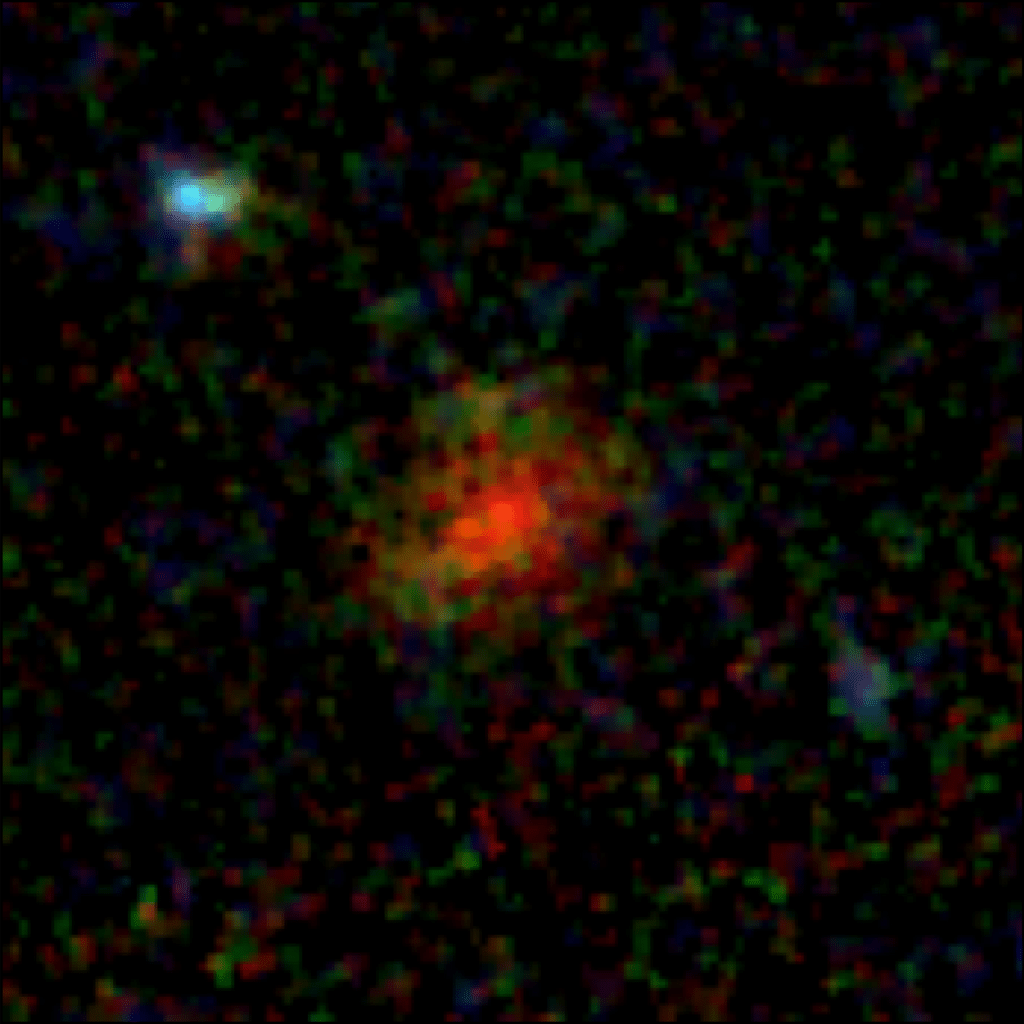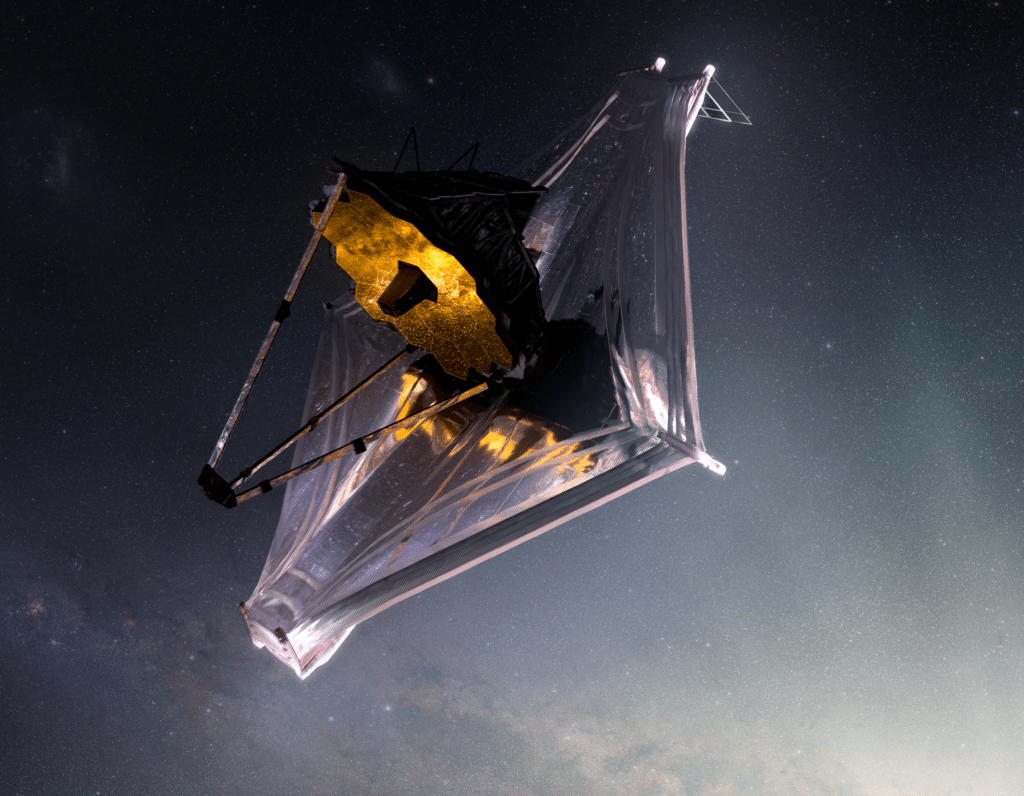In an extraordinary revelation, the James Webb Space Telescope (JWST) has brought a previously elusive galaxy, AzTECC71, into focus, challenging our understanding of the early universe. This discovery, part of the COSMOS-Web project, is a testament to the advanced capabilities of JWST and offers new insights into the early universe.
AzTECC71, initially observed as a mere glowing blob through ground-based telescopes and subsequently invisible in the Hubble Space Telescope’s imagery, has reemerged as a distinct entity in JWST’s view. Located nearly 1 billion years after the Big Bang, this galaxy is a bustling hub of star formation, obscured by a thick layer of cosmic dust.
“This thing is a real monster,” says Jed McKinney, a postdoctoral researcher at The University of Texas at Austin, in a statement. “Even though it looks like a little blob, it’s actually forming hundreds of new stars every year. And the fact that even something that extreme is barely visible in the most sensitive imaging from our newest telescope is so exciting to me. It’s potentially telling us there’s a whole population of galaxies that have been hiding from us.”
This discovery challenges prior notions of a sparsely dusty early universe, indicating that galaxies like AzTECC71 might be three to ten times more common than previously believed. If this is confirmed, it suggests a dustier and more dynamic early cosmic environment.

The research, published in The Astrophysical Journal, is a part of the COSMOS-Web project, co-led by Caitlin Casey, an associate professor at UT Austin. The project, awarded 250 hours of observing time in JWST’s first year, aims to map up to 1 million galaxies, offering unprecedented insights into the universe’s earliest structures.
AzTECC71 was initially detected by the James Clerk Maxwell Telescope in Hawaii as an indistinct blob of dust emission. Further observation using the ALMA telescope in Chile, which operates in the infrared spectrum, pinpointed the galaxy’s location. JWST’s infrared imaging at 4.44 microns finally revealed the faint galaxy, which remained hidden in shorter wavelengths of light.

JWST’s sensitivity to both optical and infrared light is crucial in studying these heavily dust-obscured galaxies. “With JWST, we can study for the first time the optical and infrared properties of this heavily dust-obscured, hidden population of galaxies,” McKinney explains.
This research, supported by NASA through a grant from the Space Telescope Science Institute, is not just a testament to technological advancements but also a beacon guiding us toward a deeper understanding of our cosmic origins. As we continue to uncover these JWST-faint galaxies, the veil over our cosmic past is gradually lifted, revealing a universe more complex and vibrant than ever imagined.












